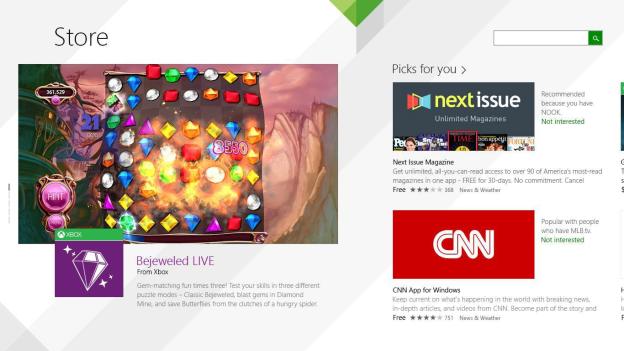
Microsoft’s been working hard lately to carve out a successful portion of the ever-growing mobile and application markets. The company’s been pushing its Surface RT tablets with contests and updates, and Microsoft recently spoke in length about all the new tools and tricks it’s added to its development kits at Build 2013. According to ZDNet, however, Microsoft’s work may finally be paying off. The company officially passed the 100,000 application mark in its Windows Store.
This is great news for Surface RT owners, since, unlike the Pro version, the RT version of the tablet can only run apps downloaded from the Windows Store. Microsoft announced changes to its Windows Store at its Build conference last week, which included improvements to app promotion in Windows 8.1. We’re hoping the increase in the number of apps, app sales, and the improvements to the interface will better the Windows Store, as we thought it was a complete mess just a few months ago.
This current milestone is a win for Microsoft, but the company is still far behind its competition. Currently, Google has over 700,000 apps, and Apple boasts 850,000 apps – not to mention the 350,000 iPad exclusives that Apple offers its tablet customers. Having just reached the 100,000 mark, we see the rather vast road that Microsoft has ahead of it. Still, the number is a push in the right direction, and to a company that’s just getting its start in the mobile sector of the market, it’s a promising result.
Editors' Recommendations
- 7 beloved Windows apps that Microsoft has killed over the years
- Windows 11’s much-anticipated Android Apps integration finally arrives in beta
- Windows 11 is finally taking the Microsoft Store seriously
- Windows 11 could finally bring Android apps to the Microsoft Store
- Adobe Photoshop now runs natively on Windows on ARM, catching up to Apple’s M1


